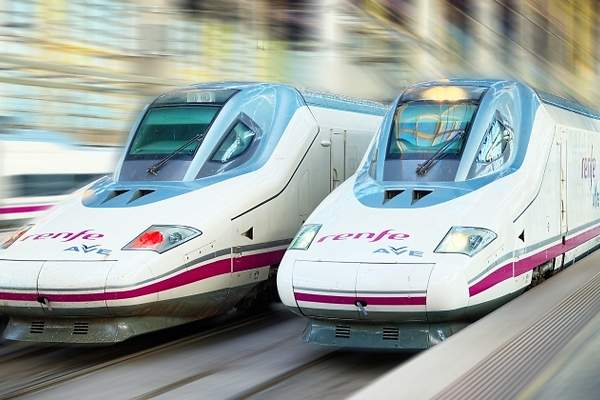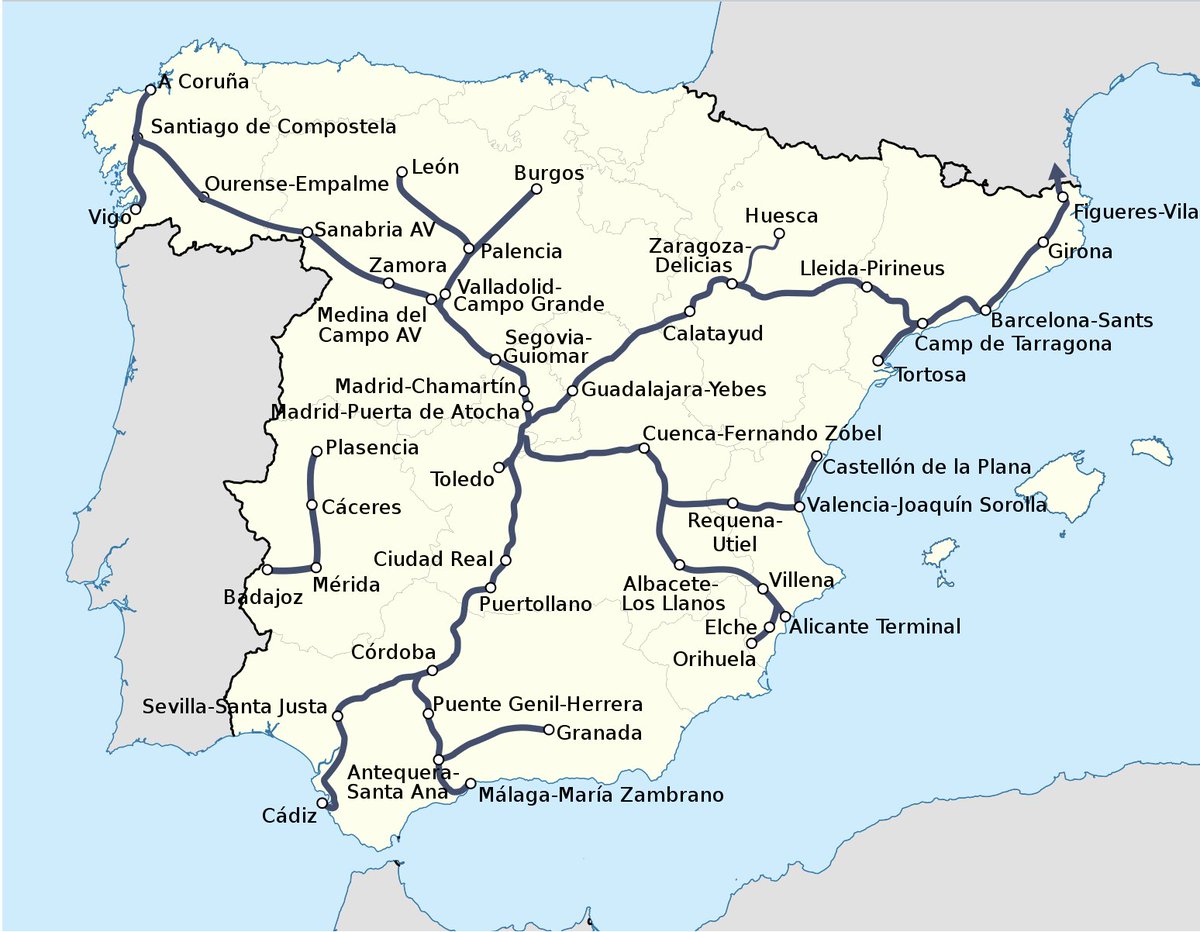The population density of the American Midwest is comparable to that of #Spain.
Spain has 2,240 miles of high-speed rail.
American Midwest: 0.
🧵


Spain has 2,240 miles of high-speed rail.
American Midwest: 0.
🧵



High-speed rail in this region would replace short-haul flights, and go a long way to reducing carbon emissions. Should be a no-brainer for Amtrak Joe Biden—you'd think, anyway...
(Fantasy map below)
(Fantasy map below)

I bring this up b/c @the_transit_guy has made the comparison between overachieving China and sad-sack US. Fair point, but a more proximate comparable might be Spain...
Let's dream big: get #Montreal #Vancouver #Toronto connected by high-speed too.
This map from @alon_levy
This map from @alon_levy

"Back in 2009, SNCF (#France's rail system) proposed a $68.5 billion (94.6 in 2022 dollars) dollar high-speed rail system for the Midwest"
— @RealEric4Real
— @RealEric4Real

#Spain offers a high-speed train service between Barcelona and Madrid called Avlo.
It covers the 625 km distance in 2 hours 30 minutes, top speed 330 km/h (185 mph). Fares start at €7.
It covers the 625 km distance in 2 hours 30 minutes, top speed 330 km/h (185 mph). Fares start at €7.

• • •
Missing some Tweet in this thread? You can try to
force a refresh


























